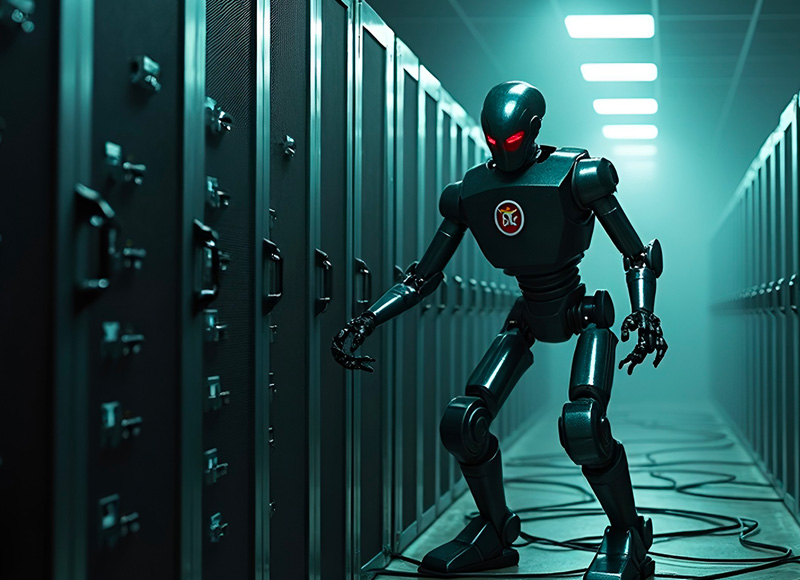Some people are in for a rude awakening with DeepSeek...
I recently read a post from someone I respect in the AI industry—someone who understands the risks of deploying AI in enterprise environments. This person had correctly advised that the web-based version of DeepSeek R1 was dangerous, but then they said something that floored me:
"I wouldn’t trust the web version, but it's perfectly safe installing the open-source version on your computer or servers."
Wait. What?
That logic is completely backward. If anything, the self-hosted version could be even riskier because once an AI model is inside your network, it can operate without oversight.
This conversation made me realize just how dangerously naïve people still are about AI security. Open-source doesn’t automatically mean safe. And in the case of R1, I wouldn’t install it on any machine—not on a personal laptop, not on a company server, and definitely not on an enterprise network.
Let me explain why.
Open-Source AI Models Can Contain Malware
There's a common misconception that open-source software is inherently safe because the code is publicly available for review. In reality, open-source software is only as safe as the people reviewing it—and let’s be honest, most companies don’t have the time or expertise to audit an entire AI model’s codebase line by line.
Here’s How an Open-Source AI Model Can Be Compromised:
- Hidden Backdoors in the Model Weight
- If the model was trained with compromised data, it can have hidden behaviors that only activate under certain conditions.
- Example: It could ignore specific security threats or leak sensitive data in response to certain queries.
- Malicious Code in the Deployment Scripts
- AI models rely on scripts to load, run, and manage them.
- These scripts can be silently modified to execute unauthorized actions—like installing hidden keyloggers or sending data externally.
- Compromised Dependencies & Supply Chain Attacks
- Most AI models require external libraries (like TensorFlow, PyTorch, or NumPy).
- If even one dependency gets hijacked, attackers can inject malware without modifying the AI model itself.
- Example: In 2022, a PyTorch dependency was compromised, allowing attackers to steal environment variables from affected machines.
- Network Activity & "Phone Home" Behavior
- Some AI models can silently communicate with external servers, even when they appear to run locally.
- If a model was developed with malicious intent, it could exfiltrate proprietary data without your knowledge.
- You’d never know it happened—until it was too late.
China's DeepSeek R1 is a Case Study in Red Flags
Let’s talk about DeepSeek R1, the open-source AI model I would never install under any circumstances.
- It’s developed in China. This isn’t about paranoia—it’s about real-world cybersecurity threats.
- China has a history of embedding spyware into tech products. (TikTok, Huawei, government-mandated data access laws…)
- It’s already shown suspicious behavior. The R1 web service was mysteriously shut down shortly after launch, citing a security breach.
- Nobody has fully audited the model’s code. And even if they did, who’s checking the training data, the prebuilt binaries, or the API integrations?
If TikTok is enough of a national security threat to get banned in multiple countries, why would anyone trust a Chinese-built, enterprise-grade AI model running inside their organization?
The Real Danger of Local AI Models: Bringing the Trojan Horse Inside the Walls
One of the most dangerous misconceptions about AI security is the belief that local models are safer than cloud-based ones. This is only true if you have full control over the model, its training data, and its codebase.
If an AI model is compromised and you install it inside your private network, you’ve essentially invited the Trojan horse inside your castle walls.
Think about it:
- An infected AI model running locally has unrestricted access to everything on your system.
- A cloud-based AI at least has barriers (APIs, access logs, network monitoring).
If a compromised local AI model goes rogue, how would you detect it?
You probably wouldn’t—until something catastrophic happened.
Real-World Examples of AI Security Risks
🚨 Microsoft AI Model Vulnerability (2023):
- Security researchers found exposed internal Microsoft AI models that could be manipulated to leak sensitive data.
🚨 Pytorch Supply Chain Attack (2022):
- Hackers compromised a widely used AI library, allowing them to steal credentials from affected machines.
🚨 China’s AI Hacking Capabilities:
- The U.S. and U.K. governments have repeatedly warned about China’s ability to embed spyware in software and AI models.
Still think it’s safe to install a black-box AI model built in China onto your internal network?
How to Protect Your Organization from AI Security Risk
If you’re responsible for deploying AI in an enterprise environment, you need to follow these security best practices:
✅ Only use AI models from trusted sources (OpenAI, Meta, Microsoft, Google, Anthropic).
✅ Audit all code before deploying an AI model internally.
✅ Never install an AI model from an unknown GitHub repo without verifying its origin.
✅ Monitor all network activity for unexpected outbound connections.
✅ Run AI models inside isolated environments (containers, virtual machines).
✅ Get a security professional to assess AI model risks before deployment.
Final Thoughts: The Stakes Are Too High with DeepSeek
AI security is not a hypothetical risk. It’s a real and immediate concern that most businesses are not prepared for.
DeepSeek R1 may be open-source, but that doesn’t make it safe. In fact, it makes it easier to Trojan-horse malware into an enterprise environment because people assume open-source means trustworthy.
This is why I will never install DeepSeek R1 on any computer, server, or network.
If you care about cybersecurity, data integrity, and protecting your business, neither should you.
What Do You Think?
I’d love to hear your thoughts on AI security. Have you seen any red flags in open-source AI models? Would you ever trust DeepSeek R1?

